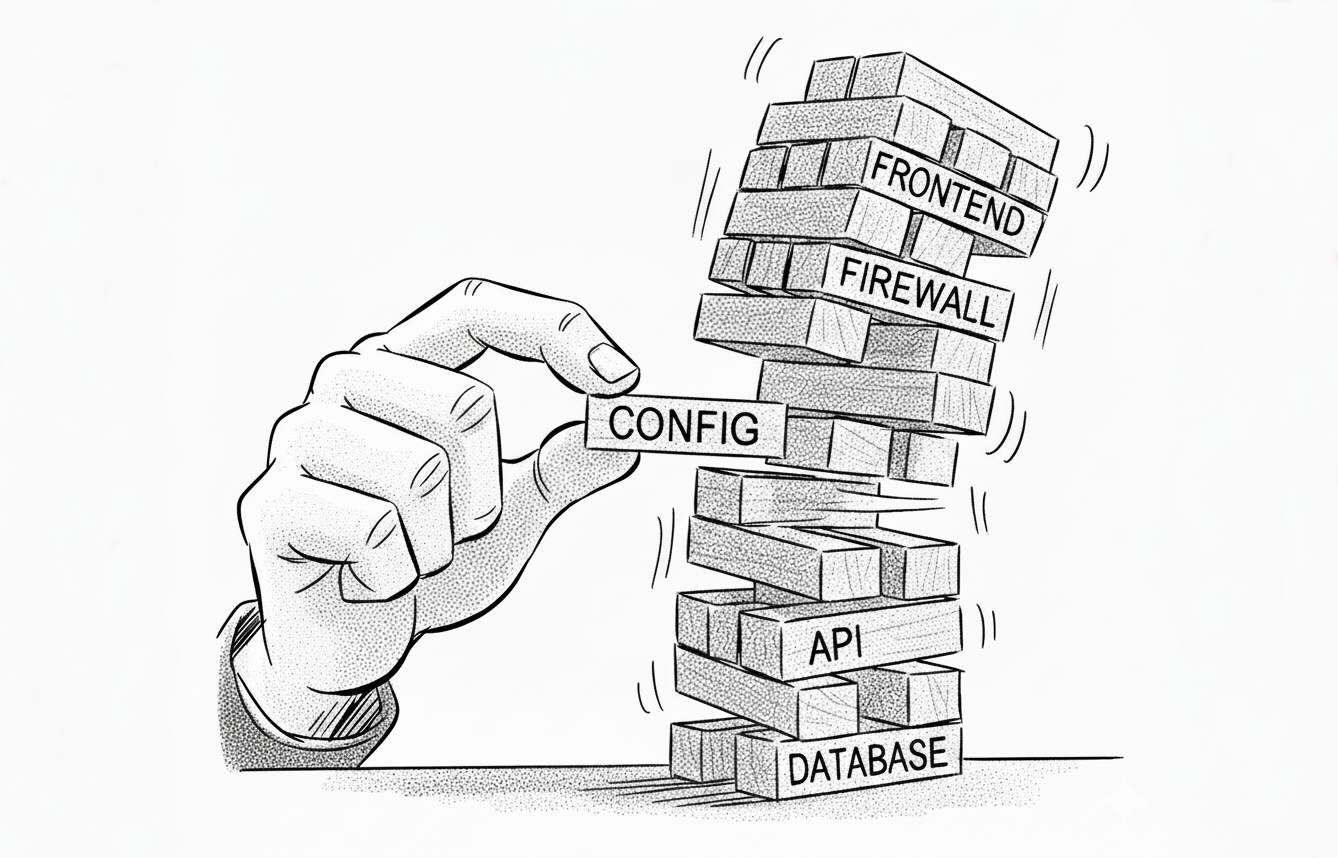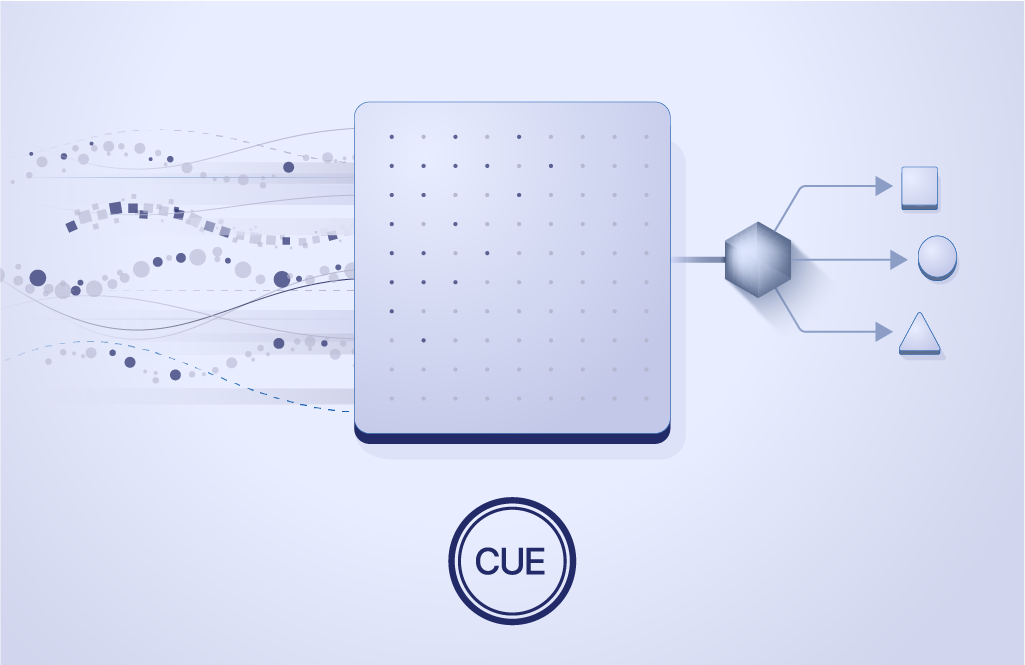Misconfiguration: The Multi-Billion-Dollar Blind Spot

If you run servers, networks, LLMs, infrastructure, or devices, you’re managing configuration. And where there’s configuration, there’s misconfiguration.
While software engineering practices have advanced significantly, configuration management has lagged behind. Software tells a computer what to do; configuration controls how that software behaves and interacts. It sounds like a simple distinction—but it’s anything but.
The recognition that configuration is fundamentally different from software isn’t new. Back in 2003 at Google, while designing Borg (which later inspired Kubernetes), we set out to solve configuration issues. We didn’t succeed at the time, but we saw firsthand how painful misconfigurations can get—and what it might take to fix them.
Misconfiguration: A Multi-Billion Dollar Problem
Today, misconfigurations are still a multi-billion dollar problem: a majority of major software service outages trace back to configuration errors. These failures come with steep costs: downtime, firefighting hours, reputational damage, and lost revenue.
- CrowdStrike (Reuters, 2024): A misconfigured update triggered a global IT outage, grounding flights and halting operations across banks and hospitals. The root cause? A single faulty configuration file. Approximate economic loss: $5–8 billion. Delta Air Lines alone estimates damages of around $500 million.
- Facebook (Guardian, 2021): A routine configuration update took the entire platform offline for six hours, costing not only $100 million in revenue, but wiped out $50 billion of Facebook’s market value.
- Cloudflare (Techcrunch, 2020): A misconfigured router rule brought down large parts of the internet, including Discord, Shopify and Politico.
- Equifax (FTC, 2017): A missed configuration patch exposed the sensitive data of over 145 million users, leading to lasting reputational damages and a $700 million legal fallout.
The Equifax case shows that outages are not the only issue misconfigurations can cause; a minor mistake can expose critical vulnerabilities to bad actors. Ransomware attacks cause an estimated $50 billion in damages every year, and according to Microsoft, 80% of ransomware attacks stem from misconfigurations.
Why Misconfigurations Happen
As systems become increasingly more complex, misconfiguration mishaps become increasingly more dangerous.
Unlike software, which is typically built hierarchically from well-defined components, configuration is everywhere in your system. It is a tangled web of cross-cutting concerns that can hide almost anywhere: in command-line flags, environment variables, database schemas, policies, and validation logic, just to name a few. The configuration is there, but siloed.
Configuration is often treated as “just data.” Settings. Constants. Harmless. And since it’s “just data,” people often assume it doesn’t need testing.
In 2009 at Google, a stray / was accidentally added to a malware pattern and
marked every search result as malware for over 40 minutes.
Google has since then strongly encouraged applying software-quality testing standards to configuration and data files. But still, more often than not, configuration does not get tested.
Preventing Misconfiguration with CUE
The good news? Most misconfigurations are avoidable. Research at Google showed that more than 50% of configuration-related outages could have been prevented, because the warning signs were already present—if only the data had been properly connected and tested.
That’s why we built CUE, an open source language to take back control of configuration.
With CUE, you can connect the dots between disparate configuration sources and formats, validate behavior across services, and find issues before they hit production. This practice, commonly described as shifting left, makes it possible to catch failures early, even across diverse tech stacks.
What was tried with Borg over 20 years ago, we finally managed to achieve with CUE. With CUE, you can make sense of your configuration across different environments, validate and test it, and share modular configuration pieces (be it workflows, schemas or policies).
Adopted by some of the world’s leading companies, CUE powers everything from satellites and ISPs to energy platforms and cloud-native systems.
Introducing CUE Labs: A Vision for Unified Configuration
CUE Labs is the company behind the CUE open source project. Our mission is simple: make configuration easy.
We not only build and maintain the CUE project and support its ecosystem, we also provide products and services to make it simple to manage configuration.
One such vital tool built on top of CUE is our Central Registry, a platform where teams can discover, share, and reuse vetted schemas for popular services like Kubernetes and GitHub Actions, as well as for their own internal tools. By making reusable schemas centrally available and versioned, the Central Registry helps teams validate configurations, reduce duplication, and enforce policies across projects.
At CUE Labs, we end configuration chaos by making configuration understandable, predictable, and manageable. We are here to help the industry stop treating configuration as an afterthought—and start treating it as the critical software asset it is.
🚀 Start exploring:
- Explore how we can prevent misconfigurations at scale: contact us
- Get started with the Central Registry and validate your favorite tools—Kubernetes, GitHub Actions, Argo CD and more.
- Learn more about the CUE project: cuelang.org
About the Author
Marcel van Lohuizen is the creator of CUE and CEO and co-founder of CUE Labs. Before that, he co-created Borg, Google’s pioneering cluster management system that inspired Kubernetes. He led the development of Borg’s orchestration tooling and the GCL configuration language—both of which remain central to Google’s infrastructure decades later. Marcel also contributed to the Go language and investigated large-scale system failures as part of Google’s SRE research group. His experience designing complex systems and understanding their failure modes directly informed the vision behind CUE.


